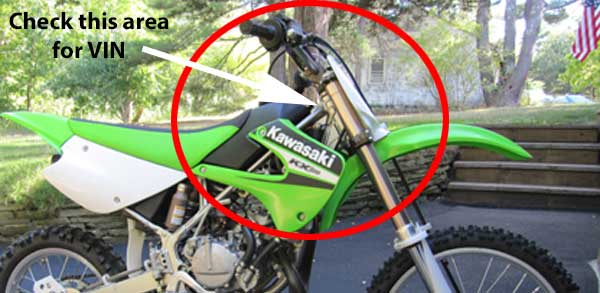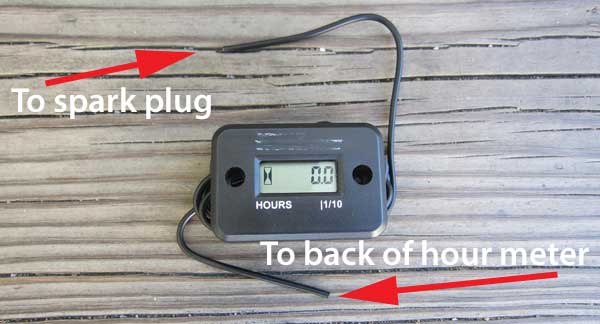Buying A Used Dirt Bike
Buying a used dirt bike can be stressful especially for a beginner rider, but due diligence, being observant, asking questions, taking your time, and going with your gut instinct are key aspects of bartering a successful deal.
If you've never bought a used dirt bike before, it's a good idea to bring an experienced dirt bike rider along the first time you look at a used dirt bike, even if he charges a few dollars for his time. He doesn't have to be a certified mechanic; just someone who has been through the drill before and knows what to look for and which questions to ask. The more expensive the bike and the less mechanically inclined you are, the more important this becomes. Even if you don't buy that first bike, you've learned what to look for and which questions to ask so when you look at another used dirt bike, you'll feel more comfortable going it alone. When you're spending $2k - $3k and more for a (hopefully) good used dirt bike, what's another $100 for experienced advice? Who knows - he may end up being a riding buddy or know of some new riding spots nearby. It's money well spent.
If you can't find anyone to accompany you the first time you look at a used bike, or don't have any money to spare, here are a few tips for buying a used dirt bike:
Initial phone call:
Once you've found a dirt bike that sounds promising, here are a few basic questions to ask during the initial phone call:
- are you the original owner
- what kind of ownership papers come with the bike (i.e. title, or Bill of Sale)
- do you have the owner's manual
- who maintained the bike
- do you know where the VIN is located, and is it legible. It's okay if the seller doesn't know the VIN's location, but ask him to find it by the time you come to look at the bike
- is the bike in stock condition or has it been modified
- if the bike has been modified, who did the work and do you have receipts or the original stock parts
Dirt bike VIN:
Whether you plan to register the bike or not, you should look at the VIN to make sure it hasn't been defaced in any way. The VIN will be somewhere on the dirt bike's frame, usually on the handlebar stem. You can check out our Dirt Bike VIN post for more info about dirt bike VINs. Almost all DMV paperwork will require the bike's VIN in order to register the bike. The image below shows the most probable VIN location:

Registering a used dirt bike:
If the seller is not the original owner and doesn't have the original paperwork, be very leery about accepting a handwritten Bill of Sale. The days of going to the DMV with a Bill of Sale scrawled on a scrap piece of paper are pretty much over. If you plan to register the bike (really good idea!) and the seller is only offering a Bill of Sale, check beforehand that your State's DMV will accept it. Most DMVs probably have a form similar to the Connecticut DMV website that requires the seller's name, address, and the bike's VIN. Be absolutely sure to check the VIN to see that it matches what's put on the Bill of Sale.
Check your State's DMV:
Every State has different regulations for registering used dirt bikes, and it only takes a few minutes to check the latest requirements before going out to look at the bike. When searching for your State's Motor Vehicle site, make sure the site is your State's official DMV site - it should have a .gov and/or your State's two-letter designation in the URL similar to California: https://www.dmv.ca.gov/
For example, the California DMV seems to be fairly strict when it comes to registering a dirt bike, having red and green sticker laws on top of the regular DMV laws. According to this page from the Ohio BMV, all dirt bikes sold after 7/1/1999 need to be registered. The New York DMV website says they don't register dirt bikes at all - dirt bikes need to be registered as ATVs. The Connecticut DMV website seems to require that not only do all dirt bikes need to be registered, they need to be inspected, and there appears to be only one location for the inspections. Good thing CT is a fairly small State. Researching your State's DMV requirement is part of your due diligence.
Now that you've called the seller and have thought about the all-important paperwork, it's time to head out to look at the bike.
First impressions:
People have different personalities and lifestyles. If you pull into the driveway and see peeling paint, gutters hanging from the house, and an old lawn mower rusting away in the yard, it's a pretty good guess that the dirt bike hasn't been maintained any better. You should still keep an open mind, but be more observant as you inspect the bike.
- The garage: The garage doesn't have to look like it belongs to a factory mechanic but somewhere, in some small part of the garage, you should see some dirt bike related items such as chain lube, an air filter cleaning kit, and a few T-wrenches.
- Two strokes: If you're looking at a used two stroke bike, ask the seller when was the last time the top end was done. If he says "top end of what?" that's not a good sign. Also ask what brand of premix oil he uses. If he says "Oh, I just use the stuff for the weed whacker because premix is premix", it's time to head for the door.
- Dirt bike hour meters: Not all dirt bikes come from the factory with hour meters or odometers. If the seller is claiming the bike has X number of hours based on an aftermarket hour meter, those hours may, or may not be, totally accurate. Aftermarket dirt bike hour meters are usually installed by wrapping one end of the hour meter wire around the spark plug. The seller may have installed it incorrectly (too loose), the wire might have loosened over time, or the seller may have removed the wire from the spark plug a few months before putting the bike up for sale. You also don't really know when the hour meter was installed, so take the stated number of hours with a grain of salt (or two). The image below shows a basic dirt bike hour meter:

Who maintained the bike:
Ask who maintained the bike. If he did the work himself and you have some doubts, ask him to walk you through changing the air filter. You're going to want to see the air filter anyway so ask him to show you how to access the air filter, which may involve removing the seat and/or a piece of plastic. He should be able to tell you which tools you'll need (usually a T-wrench), and which size socket you need for removing the plastic. It's a bit tougher if he says his "buddy" does the maintenance, but you could try asking if he has any old parts or receipts for the new parts. Finally, anyone who paid shop rates for servicing a dirt bike should have the receipts. This part of the used dirt bike buying process falls under 'going with your gut instinct'.
Basic used dirt bike checklist:
As mentioned earlier, if you're not mechanically inclined you should bring someone with you. You're not going to learn how to thoroughly inspect a used dirt bike by reading a website page, but here's a basic checklist of what to look for:
- Air Filter: Check the air filter if you haven't done so - it's a good indication of how well the bike was maintained.
- Oil leaks: Look for oil leaks, especially around the front fork seals and bottom of the engine. Dirt will get stuck to the oil and that may give you a clue where to look. Chances are the seller cleaned up the bike before you arrived, so check for oil leaks after you've taken the bike for a test ride.
- Radiator: If the bike has a radiator, check the radiator before taking the bike for a test ride because you won't be able to open the radiator cap when the bike is warm. Look for bent or broken fins on the radiator itself, and check that the coolant level has been maintained at the proper level.
- Clutch and brake levers: The clutch and brake levers should have some play, but they shouldn't pull all the way to the handlebars.
- Sprockets: the sprockets shouldn't have any excessively worn or broken edges.
- Plastics: Any dirt bike that's a few years old should have some scratches on the plastic so if the bike has brand new plastic, that may mean the bike might have been crashed or flipped. Dirt bike plastics are very easy to change so don't be blinded by a nice shiny bike.
- Frame: Check the frame for cracks, especially along weld lines. The most logical place to check is towards the bottom of the bike because of the stress of going over rocks, logs, and jumps.
- Muffler: When first looking over the bike, try to feel the muffler to see if it's warm before taking it for a test ride. That may mean the seller started the bike before you got there in order to hide any stalling, choking, or mechanical noises.
Buying a used race bike:
There are two schools of thought when it comes to buying a used race bike. Some feel a dirt bike that has been raced has taken more punishment than a bike that's been ridden casually and should be avoided. The punishment part may be true, but the guys that race dirt bikes want to win, and in order to win races the bike needs to be in top-notch condition, so the race bike has probably been maintained better than a bike that's only ridden for fun. The key to buying a used race bike is the maintenance records. If the seller can't produce parts and receipts, the race bike might not be a good choice.
Used dirt bike safety recalls:
In addition to running the bike's VIN through the stolen dirt bike databases, use the VIN to check if there are any safety recalls that the seller might not know about, or simply failed to mention. Here's a list of some dirt bike safety recall pages:
- Honda
- Husqvarna
- Kawasaki
- KTM (VIN lookup is at the bottom of the page)
- Suzuki (on-road and dual-sport bikes only)
- Yamaha
- Safercar.gov is more for cars, but it also includes data on most motorcycles
The good news when it comes to buying a used dirt bike is that most people are honest and will be upfront about the bike's condition and ownership papers. If you have any doubts at all, walk away from the deal no matter how good the price. There will be other used dirt bikes for sale somewhere down the road. Go with your gut instinct.
